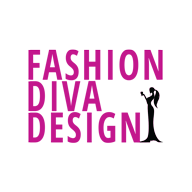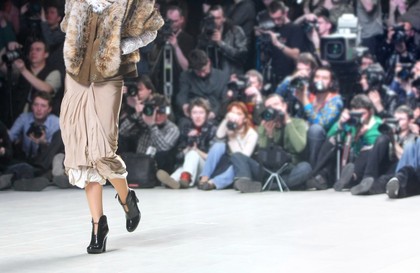When it comes to glamorous jobs, people who work in the fashion world are often seen as being in the best jobs of all. In what other industry can you rub elbows with super models, oversee photo shoots, realize your artistic visions and custom design the future of what America wears?
Careers in fashion design are a perfect marriage of creativity and utility, and are among the most coveted and competitive jobs in the industry. What might start as sketching time in a studio can eventually come to fruition in magazine spreads, runway shows and sleek models sporting the latest designer wear.
Are you one of the select few who has what it takes to become a rising fashion designer? Winning “Project Runway” is one way to play it, but there are other more realistic ways to find a dream job. Take a look below on how to stand apart from the others and break into the world of fashion.
Fashion Design – What’s it All About?
From sketching to fabric selection and pattern making, a career in fashion design means creating original clothing, accessories and footwear from scratch. If you have a flair for structure, a zest for color and a workmanlike demeanor toward hitting deadlines and finishing projects, working in fashion design might be a suitable career for you.
Fashion designers can work in wholesale and manufacturing settings; clothing and apparel companies; mass retail chains like Target, Macy’s or Nordstrom; theater and dance companies, or within specialized design agencies. While designers can work from any city, the most successful are frequently based in large cities – think Manhattan and Los Angeles. According to 2011 figures from the Bureau of Labor Statistics, nearly 75 percent of designers lived in New York City and California, and the median income was $64,530 per year ($31.02 per hour).
How to Break Into Fashion Design
When it comes to fashion design jobs, the opportunities are few and the candidate pool is great. In fact, just over 16,000 people were employed in the fashion design arena in 2011. Moving to New York or Los Angeles and getting onto people’s radars both online and off can help you to meet someone who might take a interest in your passion for fashion design. There is also value in working for a company with fashion design needs. Seek them out on job boards, school networks or social media.
Schooling Required
Typically, fashion designers get to where they are without a post-secondary education. Many designers however have studied design skills and computer-aided technology at fashion design schools. These places of learning are helpful in learning new concepts in design, as well as meeting instructors who can pass along your name and work styles to people in the industry. The schools can also benefit you in starting your own fashion-related network of people and friends. as well as gaining your own network.
Skills Required
Naturally, creativity is paramount when it comes to design. Ideal candidates are those with artistic, expressive brain power, coupled with the ability to understand technical applications and production processes. Bring to the table some earlier visual-related experience or design training and you’ll better your chances of scoring a job with the major design firms.
Industry Connections
As with many of today’s career paths, having good connections is an important consideration in landing a great design job. Join online groups, get out to local fashion-oriented meet-ups and hit industry seminars when you have a chance. Be forthcoming when it comes to sharing your work and helping when opportunities arise.
Internships
Securing an internship at a well-known design house is likely your best bet to a steady job in the industry. It’s a fantastic way to get a foot in the door, even if it begins with low (or no) pay. Plus, the work may tilt toward gofer status for the first few months. But if you work hard, make yourself indispensable and remain upbeat, potential employers will see the advantage of keeping you in the company, which may lead to industry growth.
Other Types of Fashion Design Careers
When we think of careers in fashion, we often revert to those standard bearers of the fashion industry: clothing designers, store buyers, fashion publicists, magazine editors and stylists, to name a few. But the field has broadened and today there are other paths to consider in the fashion industry. Some positions like production designer, ecommerce manager and merchandising manager are newer roles that didn’t exist five years ago. Taking a step toward fashion design school is a great first step for many of these careers.
Fashion Merchandising
A degree in fashion merchandising will put you in a good competitive position for a wide variety of fashion careers, like merchandising, buying, account management and visual merchandising. With the work role, the career can really be tailored to the individual’s skill set and interests. Income potential and day-to-day experiences vary widely, as well: GlassDoor.com showed an income range between $38,000 and $78,000 per year.
Digital PR & Social Media
Jobs like digital publicists and social media community managers are other examples of new career paths for fashion-minded passionistas. Having a role dedicated to communicating a company’s daily operations on social media and PR fronts is an important one. Depending on the company, some community managers’ roles hover in the $50,000 salary range.
These individuals should be clear and consistent with a clear voice that fits with the company’s image and values. Combining fashion degrees with a journalism or communications studies degree is optimal for career movement. As always, a creative approach and personable style are necessary items in these jobs.
Photography
Fashion photography is seen in even more of a rarified air among job seekers. Brilliant photographers get the plum fashion photography assignments because they are that good. The NY Times’ Bill Cunningham is in that space. He can bring a new outlook to a fashion ensemble with his photographic eye.
Careers in professional photography and creative direction can bring in top dollar, and requires a creative, yet analytical eye. Many photographers work independently, which means setting their own hours and effectively owning their own businesses. Work perks include traveling for photo shoots, shooting special events and working with high-profile, glamorous subjects.
Fashion Blogging
Online content creation and curation is a growing industry, especially in the fashion industry, where word of mouth and pass-along tweets are important factors in a good online presence. Doing fashion-oriented online content should interest style-savvy writers with an eye for design. Income for bloggers can vary widely, depending on the sites at hand.
Graphic Design
Graphic designers are increasingly important in fashion circles. As the world becomes more digital, many graphic designers work for firms or corporations in fashion. If you’re more interested in the visual aspects of fashion design, looking into graphic design schools that offer a wide range of career opportunities might be a suitable career path for you. You may find yourself even more satisfied laying out fashion editorials in Adobe InDesign as you would draping on a dress form.

